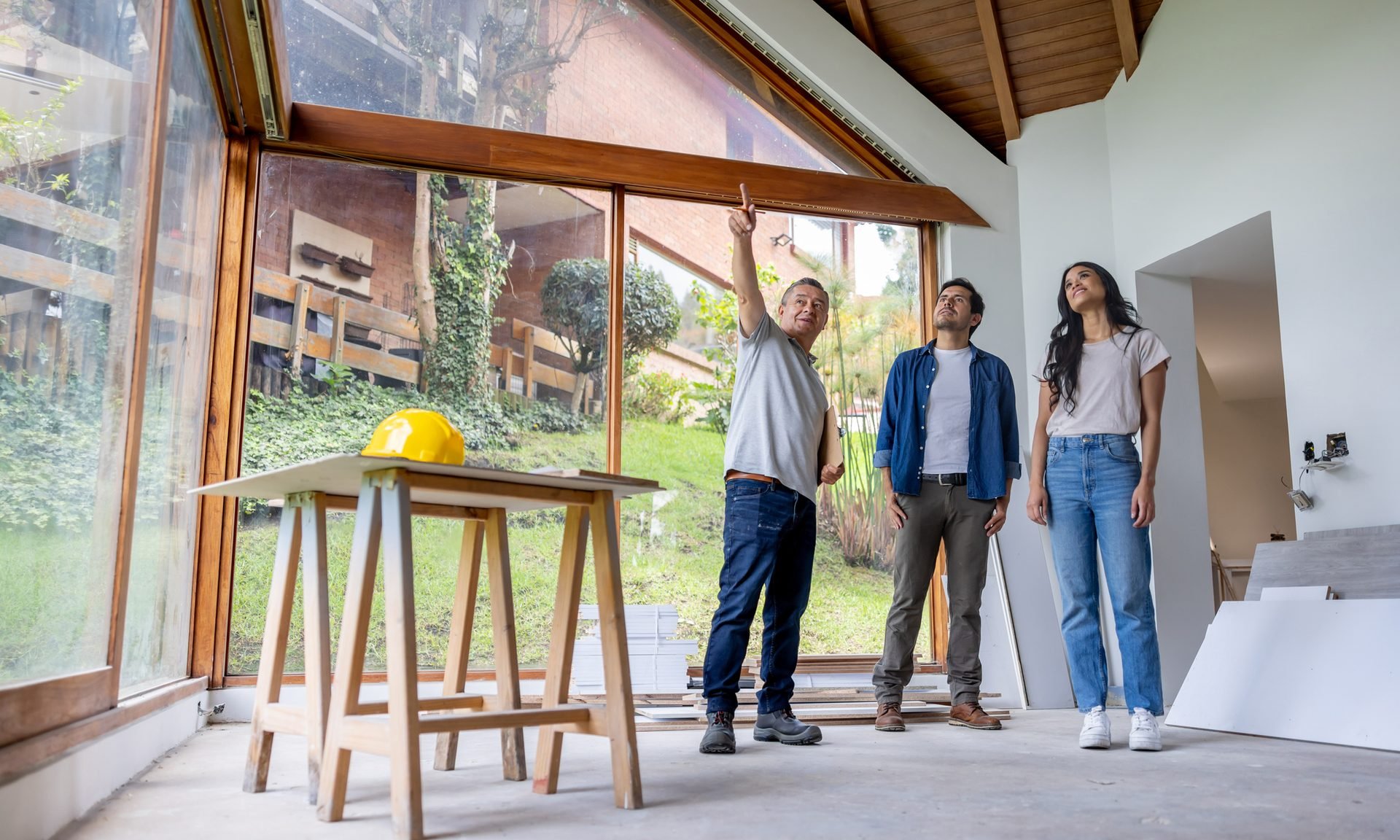How Much Does it Cost to Renovate a House?
The cost to renovate a house can range from $15 to $150 per square foot, depending on scope, size, location and labor.

Some or all of the mortgage lenders featured on our site are advertising partners of NerdWallet, but this does not influence our evaluations, lender star ratings or the order in which lenders are listed on the page. Our opinions are our own. Here is a list of our partners.
The cost to renovate a house can range from $15 to $150 per square foot, depending on scope, size, location and labor. Many popular renovation projects cost under $20,000 for low-end, minor renovations to more than $100,000 for high-end, major projects.
High-end renovation costs
High-end renovations use the most upscale materials and popular trends. National average prices for major projects in this category can easily be in the high five-figure or even six-figure range. Here are the national average prices for popular high-end major renovations.
High-end bathroom renovation
- Average renovation cost: $78,840.
- Project overview: Expansion of existing bathroom within the house’s original footprint and relocation of all fixtures.
- Highlights: New shower with body-spray features and a frameless glass enclosure, freestanding tub, high end faucets/fixtures, ceramic tiles, one-piece toilet, spot lighting, heated floors, cabinetry and extended HVAC.
Addition of an upscale bedroom suite
- Average renovation cost: $339,513.
- Project overview: Building a 32 x 20-foot bedroom suite over the home’s crawlspace with a full bathroom and sitting area.
- Highlights: Custom bookcases, built-in storage, walk-in closet/dressing area, fireplace with custom mantle and stone hearth, walk-in shower with dual shower heads and frameless glass enclosure, separate soaker tub, one-piece toilet in partitioned area, two sinks in separate custom vanities and large mirrors, hospitality center with undercounter fridge, bar sink, microwave and custom cabinetry.
Major upscale kitchen renovation
- Average renovation cost: $158,530.
- Project overview: Replacing all appliances, countertops, cabinetry, fixtures, flooring and features in an existing 200-square-foot kitchen.
- Highlights: Custom cabinets with built-in sliding shelves, built-in refrigerator, commercial-grade cooktop and vent hood, wall oven, undermount sink with designer faucets and water filtration system, built-in microwave, stone countertops, ceramic or glass tile backsplash, new lighting and new flooring.
Advertisement



HELOC & Home Equity Loans from our partners

on FourLeaf Federal Credit Union
FourLeaf Federal Credit Union 

Min. credit score
670
Max. loan amount
$1,000,000

on Achieve
Achieve 

Min. credit score
600
Max. loan amount
$300,000

on Figure
Figure 

Min. credit score
600
Max. loan amount
$750,000
Mid-range renovation costs
Mid-range projects may sometimes be as extensive as high-end renovations, but they use standard materials and fixtures rather than luxury ones. Here are national average costs for some popular mid-range renovations.
Major mid-range bathroom renovation
- Average renovation cost: $25,251.
- Project overview: Updating existing 5 x 7 bathroom by replacing existing fixtures, cabinetry, flooring and wall covering.
- Highlights: Porcelain-on-steel tub with ceramic tile surround and single-lever shower control, standard white toilet, vanity with integral sink, recessed medicine cabinet with lighting vinyl wallpaper and ceramic tile floor.
Addition of a mid-range bedroom suite
- Average renovation cost: $164,649.
- Project overview: Building a 24 x 16 suite that includes a bedroom, bathroom and walk-in closet/dressing area. Suite is built over crawlspace.
- Highlights: Ceramic tile shower and separate freestanding tub, solid-surface countertop with double-bowl sink vanity, carpeted bedroom floor, painting of all nontiled walls, ceiling and trim. Also includes overall and spot lighting and an exhaust fan.
Major mid-range kitchen renovation
- Average renovation cost: $79,982.
- Project overview: Replace most appliances, cabinetry, countertops, fixtures, flooring and features in an existing 200-square-foot kitchen.
- Highlights: Energy-efficient range with vented hood, dishwasher, built-in microwave, dishwasher, custom lighting, garbage disposal, semicustom wood cabinets, 3 x 5-foot island, laminate countertops, stainless steel double sink with single-lever faucet, new flooring, painted walls, ceiling and trim.
Minor mid-range kitchen renovation
- Average renovation cost: $27,492.
- Project overview: Update 200-square-foot kitchen without tearing out cabinet boxes.
- Highlights: Reface cabinets with Shaker-style drawer fronts, panels and hardware; install new laminate countertops, mid-priced sink and faucet. Replace existing appliances with energy-efficient stove, cooktop, and refrigerator. Install new flooring and paint walls, ceiling and trim.
Lower-cost renovation costs
If you’re considering a less extensive renovation, here’s a rough idea of what you might expect to spend on a few popular projects:
- Bedroom renovation (paint, furniture, closet organization system, etc.): $1,500 to $5,500.
- Living room renovation (paint, flooring, windows, lighting, etc.): $5,000 to $10,000.
- Mold remediation: About $1,200 to $3,750.
- Asbestos remediation: About $1,200 to $3,300.
- Replacing appliances: $350 to $8,000 per appliance.
Gut renovation costs
Remodeling an entire house can cost from $15 to $150 per square foot, and costs are likely higher if you’re working on a historic home. Gutting a house all the way down to the studs and remodeling typically costs about $90,000 to $300,000.
Can I get financing for a home repair or improvement?
Your contractor may offer some financing options (either through a partner or a payment plan), but there are other — and maybe better — financing options available.
Home equity loan or HELOC
Home equity loans or home equity lines of credit (HELOC) may have lower interest rates than financing with an installer, as well as future opportunities for refinancing and possible tax benefits.
With a home equity loan, you receive a lump-sum payment and then pay it back at a fixed interest rate over an agreed period of time, typically five to 30 years. HELOCs are more akin to a credit card, something you use as needed. You’ll usually have 10 years to draw from the line of credit, during which time you only have to pay interest, and after that you pay both the principal and interest. HELOC interest rates typically are variable, meaning your monthly payment could rise or fall over time. And with each of these options, you're using your home as collateral.
Personal loan
Many banks, credit unions and online lenders offer personal loans, with amounts typically from $1,000 to $100,000 and with fixed annual percentage rates. You receive a lump sum and repay it in equal monthly installments over a set period, typically two to seven years. Unlike with home equity financing, there is no collateral. This means your home isn’t at risk if you miss payments, but you’ll still have to pay late fees and the late payments can negatively impact your credit.
Credit card
Credit cards are an option for lower cost repairs or renovations. That’s because credit cards typically charge higher interest rates than home equity loans, HELOCs and personal loans. When used responsibly, credit cards can come with great benefits, such as 0% introductory APR periods that allow you to avoid interest for a set number of months; rewards so you can earn cash back, travel or points; and sign-up bonuses that can give you some extra cash back or rewards for a larger purchase. If you go this route, you’ll want to make sure you pick one of the best credit cards for home improvements.
Which financing option is best for me?
The best financing option for you will depend on how much money you need, when you need the money, what project you’re doing and how long you need to pay the money back. If it’s something that’ll add value to your home, a HELOC or home equity loan may be your best option because the value of your house could increase by more than the amount of the loan.
On the flip side, if it’s a less expensive repair, a credit card is probably your best option if you want to pay no interest or earn rewards. Personal loans can apply to both small and large repairs or renovations, and they may make sense if you don’t have much equity in your home.
Some home improvement contractors offer their own financing options. Before taking this option, shop around and see how their offer compares with other loans.
Regardless of what you choose, make sure you compare interest rates, terms and fees with any financing options you’re considering. This will ensure you get the best deal.
Advertisement
Min. credit score 600 | Min. credit score 600 |
Min. down payment N/A | Min. down payment N/A |
Article sources
NerdWallet writers are subject matter authorities who use primary,
trustworthy sources to inform their work, including peer-reviewed
studies, government websites, academic research and interviews with
industry experts. All content is fact-checked for accuracy, timeliness
and relevance. You can learn more about NerdWallet's high
standards for journalism by reading our
editorial guidelines.
More like this
Related articles










